Where Do Polar Bears Live?
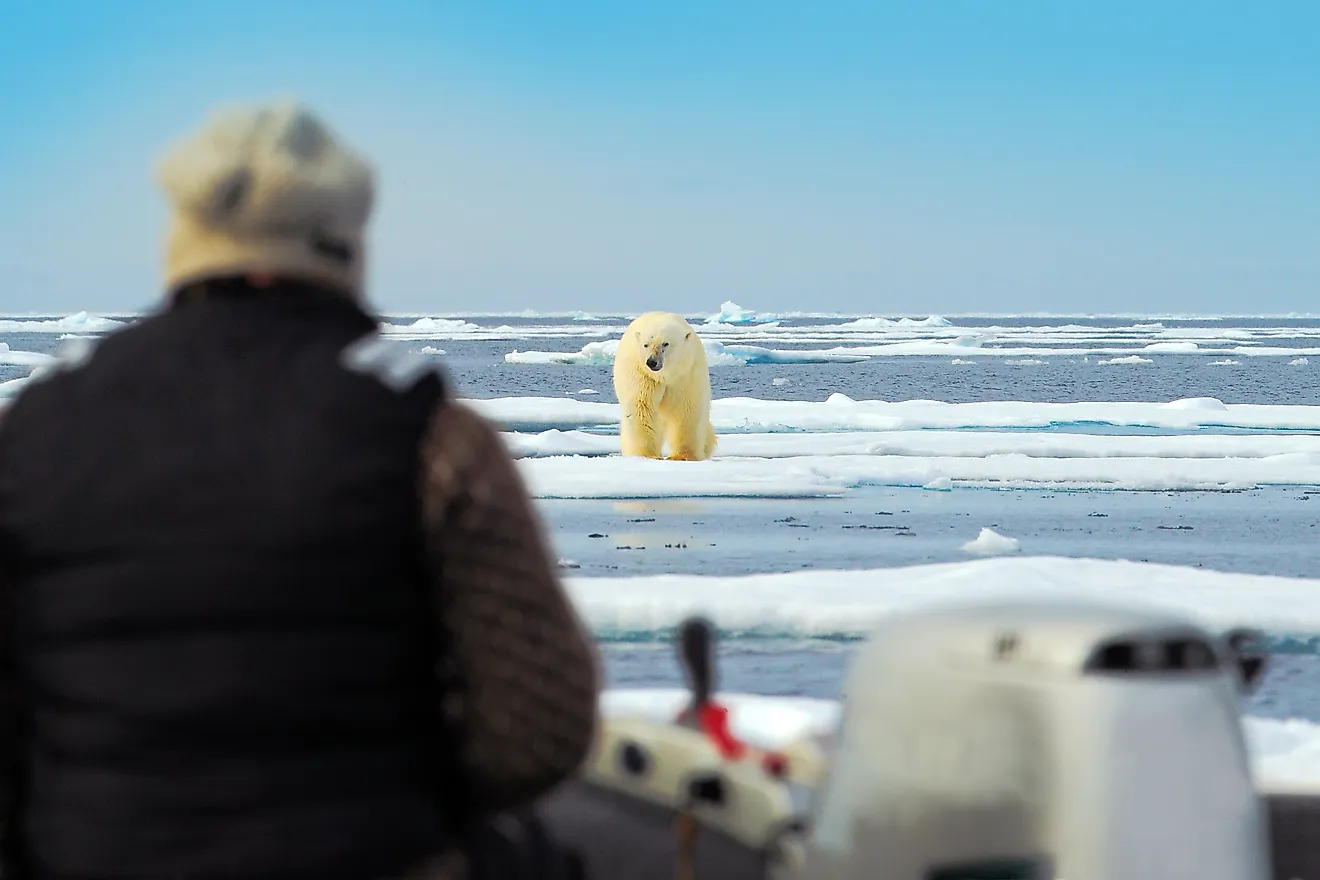
- The polar bear population is at risk due to climate change, and the melting ice caps.
- The southern most polar bear population is in Canada, in the area surrounding Hudson Bay.
- Greenland is home to the largest population of polar bears.
The polar bear is a powerful and majestic creature, often associated with conservation and wildlife organizations such as the World Wildlife Fund, and National Geographic. Long since endangered, they have also become a symbol of climate change, as the dangers of the melting ice caps become more and more prevalent. Polar bears, as is indicated by the name, live primarily in polar or ice-filled climates, in various countries around the world.
Range Of Polar Bears
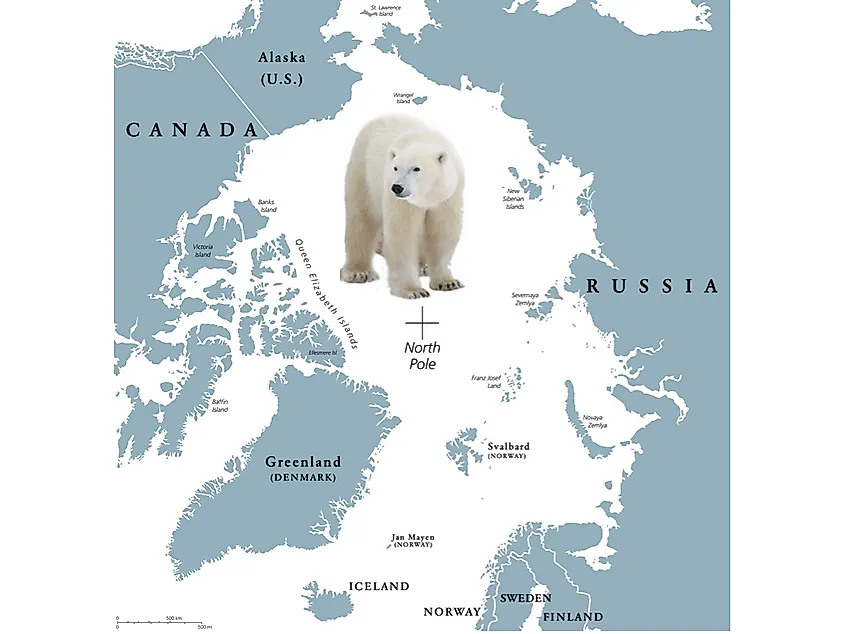
Canada
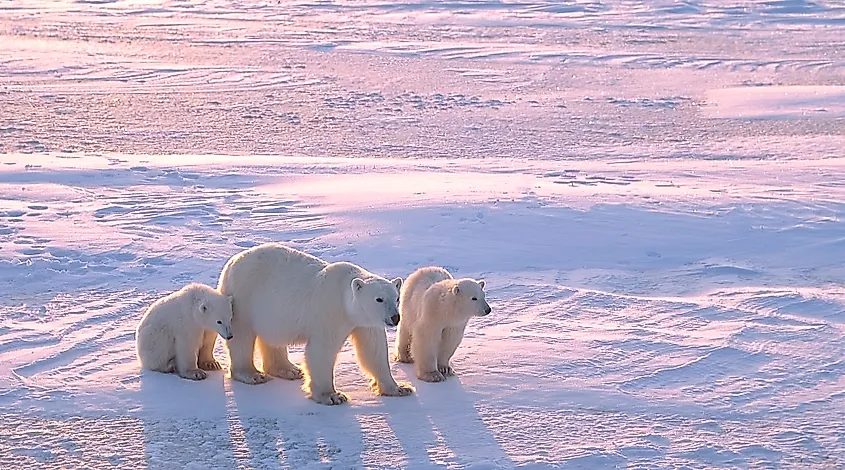
Canadians have a long-standing connection with polar bears, as well as a healthy population that either lives permanently or at least spends large portions of their time in the nation. These majestic bears also have a deep connection to the Inuit culture, where they are known as Nanuk. Canada is home to more than 60% of the world’s population of polar bears. In fact, the city of Churchill, Manitoba has become known as the ‘polar bear capital of the world’ due to the fact that some 900 polar bears live, or spend most of their time, in that region. Canada is also home to the southernmost polar bear subpopulation. While the bears usually keep to the northern parts of Canada, they can be found as far south as the Southern parts of Hudson Bay, in Manitoba, Ontario and Quebec.
Greenland
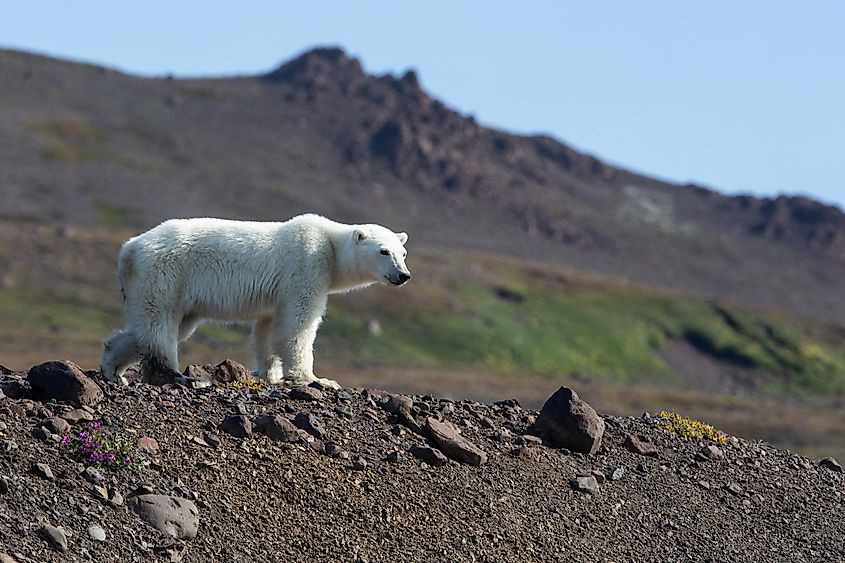
Similar to the Inuit term "Nanuk," polar bears in Greenland are often referred to as Nanoq. This sparsely populated icy nation (sparse in terms of humans) is home to more than 4,400 polar bears, meaning it has a greater population of polar bears than any other region, although many of these bears do travel between Greenland and Canada. Polar bears thrive in this cold and barren landscape, but the remote nature of Greenland means that there are less data and knowledge about the polar bears in this region.
Norway
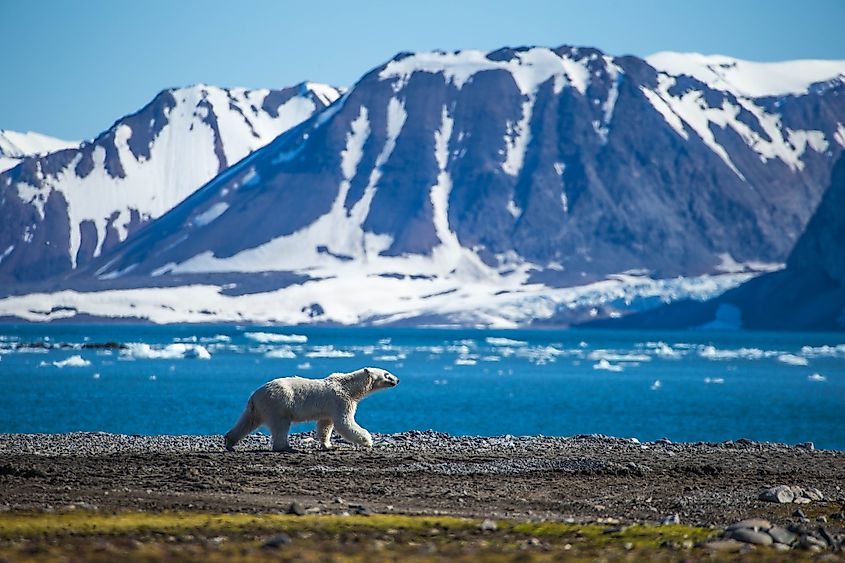
The Norse word for "polar bear" is Isbjorn, or ice bear. Though there are fewer polar bears that reside in Norway than Greenland, it is still one of the most highly populated regions, with some 2,650 polar bears. Of these, most live or spend the majority of their time on sea ice and ice flows in the Barents Sea, and among the islands and glacial landscapes of Svalbard. Norway also has a very active polar bear tracking and research institute, known as The Norwegian Polar Institute. This group has been responsible for tagging and tracking roughly 100 bears per year, and has been active for more than 40 years. This research has included everything from health and diet monitoring, to GPS tracking. This data has been used to help understand the natural habits and habitats of polar bears, as well as aid in conservation efforts.
Russia
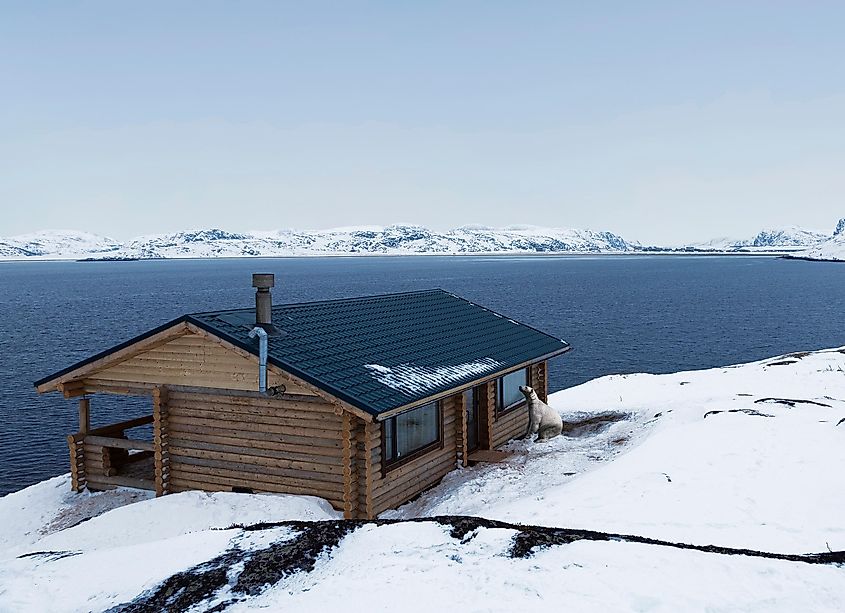
Like most polar regions and cold climate countries, polar bears have also been known to reside in Russia. Though there has been less research done in this region of the world, it is estimated that roughly 3,000 polar bears live within Russia. Despite the lack of research in these parts, Russia does have a large portion of protected land, which helps provide polar bears and other wildlife with a safe refugee and protected habitat. This 14,000 square km area is known as the Russian Arctic National Park.
Alaska, USA
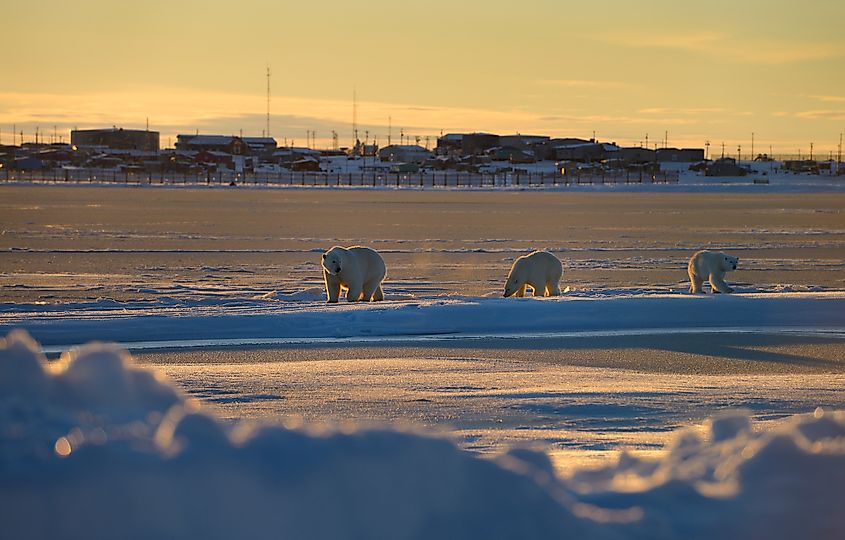
Polar bears can also be found in certain areas of the United States, namely within Alaska. There are two known subpopulations in Alaska, the Chukchi Sea population, which is the larger of the two, and those that reside in the Southern Beaufort Sea. Unfortunately, the bears in these regions have been adversely affected by climate change, and polar bears have become weaker, succumbing to the elements more easily as cubs, or dying due to lack of food supply. This is especially true of the subpopulation in the Beaufort sea region. While the polar bears from Chukchi have shown resilience, they too face the consequences of climate change, and management teams are striving to gain more data on this population in order to aid conservation efforts.
Habitat Of Polar Bears
As seen by the list of countries where polar bears are plentiful, their habitat is strongly dependent on cold temperatures and large expanses of sea ice. While polar bears do spend some of their time on land, especially during birthing seasons, they spend much of their time on ice, or swimming between ice flows. Generally, there are two main types of ice: the year-round so-called ‘permanent’ ice and ice caps, and the ice that forms and thaws on a yearly or seasonal basis. Large ice-flows and permanent ice caps are very important for the survival of the polar bear species.
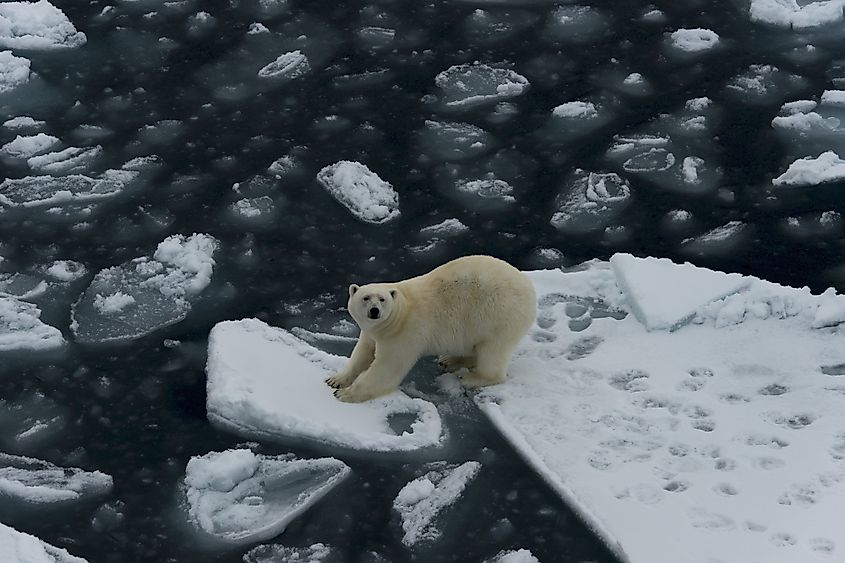
Bears are excellent swimmers and can travel great distances, but they do not spend the majority of their time in the water if they can help it, nor do they hunt as effectively in the water. Instead, they usually hunt on the ice, seeking out seals that breach the ice to breathe. Similarly, polar bears will swim between ice flows during an ice break up, but extended swimming can become dangerous for them, especially when young. As ice caps melt and the spaces of open sea grow, polar bears have been forced to swim longer and longer distances, causing stress and endangerment to the species at large. The threat to the polar bear’s habitat is the largest threat to the polar bear population in general. As safe and stable habitats decrease, polar bears are having to face more and more dangerous scenarios, difficult hunting conditions, and treacherous living conditions. Unfortunately, these factors have put polar bears in the vulnerable category in the last decades.
Threats To Polar Bears Across Their Range
Polar bears have become synonymous with conservation efforts, endangered species bulletins, and organizations such as the WWF. This is in part due to the fact that polar bears were the first vertebrate species to ever be listed as threatened under the U.S. Endangered Species Act. Placed on the list in 2008 due to projections of climate change and habitat threats, the polar bear has been at risk for over a decade. Unfortunately, despite increased tracking and research, the bears are still very much in danger, and face increasing threats to their survival.
Populations of polar bears are decreasing in all areas as they face harsher conditions and reduced habitats. In Canada, Hudson Bay has no ice in the summer months. In the last 20 years, however, the period of ice-lessness has lengthened, and melting occurs sooner in spring. This shift has caused significant issues during hunting season, as the reduction of ice in spring makes it difficult to hunt seal pups which are plentiful at this time of year. This means polar bears are getting less food, carrying less weight, and that there are fewer bear cubs born. The Hudson Bay population alone has seen a population decrease of 20 percent. Unfortunately, this is the trend seen across all population and subpopulations, with polar bears facing more and more threats worldwide.
Climate Change And Ice Melt
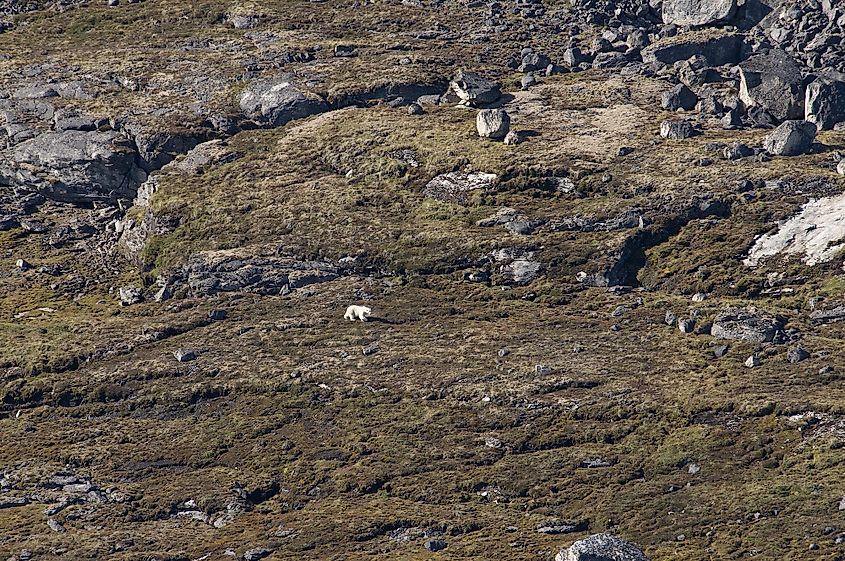
As temperatures increase, and ice caps and flows continue to melt, the polar bear’s way of life is at risk. The more the ice melts, the smaller their hunting grounds become, posing a serious threat to their ability to hunt and feed. This loss of sea ice is increasing more and more rapidly, meaning the risk is also increasing, rather than decreasing despite conservation efforts. As the ice retreats, larger and larger expanses of open sea exist between the shore and the ice flows, which the polar bears have to traverse. Not only does this mean longer swims, but the large expanses of open water can be rough and dangerous, and have been known to cause drownings—something previously not seen in these marine-type bears. A tracker on a female bear in 2011 saw a polar bear swim for nine days straight before reaching an ice flow—an unprecedented distance—and the swim cost her nearly a quarter of her weight and body fat. Not only is this type of swimming far too dangerous and costly for most adult bears, but it is rarely, if ever, a journey that young cubs can survive. In addition, these deeper rougher waters generally have less prey populations, so food is even more scarce.
Prey And Food Sources

Climate change is drastically affecting polar bears, but it also poses a threat to several other species in the area. This, in turn, means the prey that the bears rely on is also decreasing. Not only are hunting grounds being reduced year after year due to the melting and retreating ice, making it harder for polar bears to hunt, but the prey that also relies on these ice caps are suffering. Polar bears primarily eat seals, and hunt those that live on or under the frozen polar ice caps. As the ice caps melt, the seals are experiencing a decrease in habitat as well, and their populations have suffered. This means that not only are hunting conditions becoming more difficult for polar bears, but the prey is also becoming more scarce.
Overall, the human impact on polar bears and their habitat is a drastic one. Climate change is threatening both the species’ habitat, food sources, and way of life. Additionally, the reduction of the ice caps has opened up opportunities for exploration and production in areas previously untouched by humans. Open seas and reduced ice levels have allowed for offshore oil extraction, which brings not only humans and disruption to the area, but the potential for harmful oil spills and noise pollution. For these reasons, changes must be made in order to ensure the survival of these majestic creatures that continue to preserve against increasing odds.











